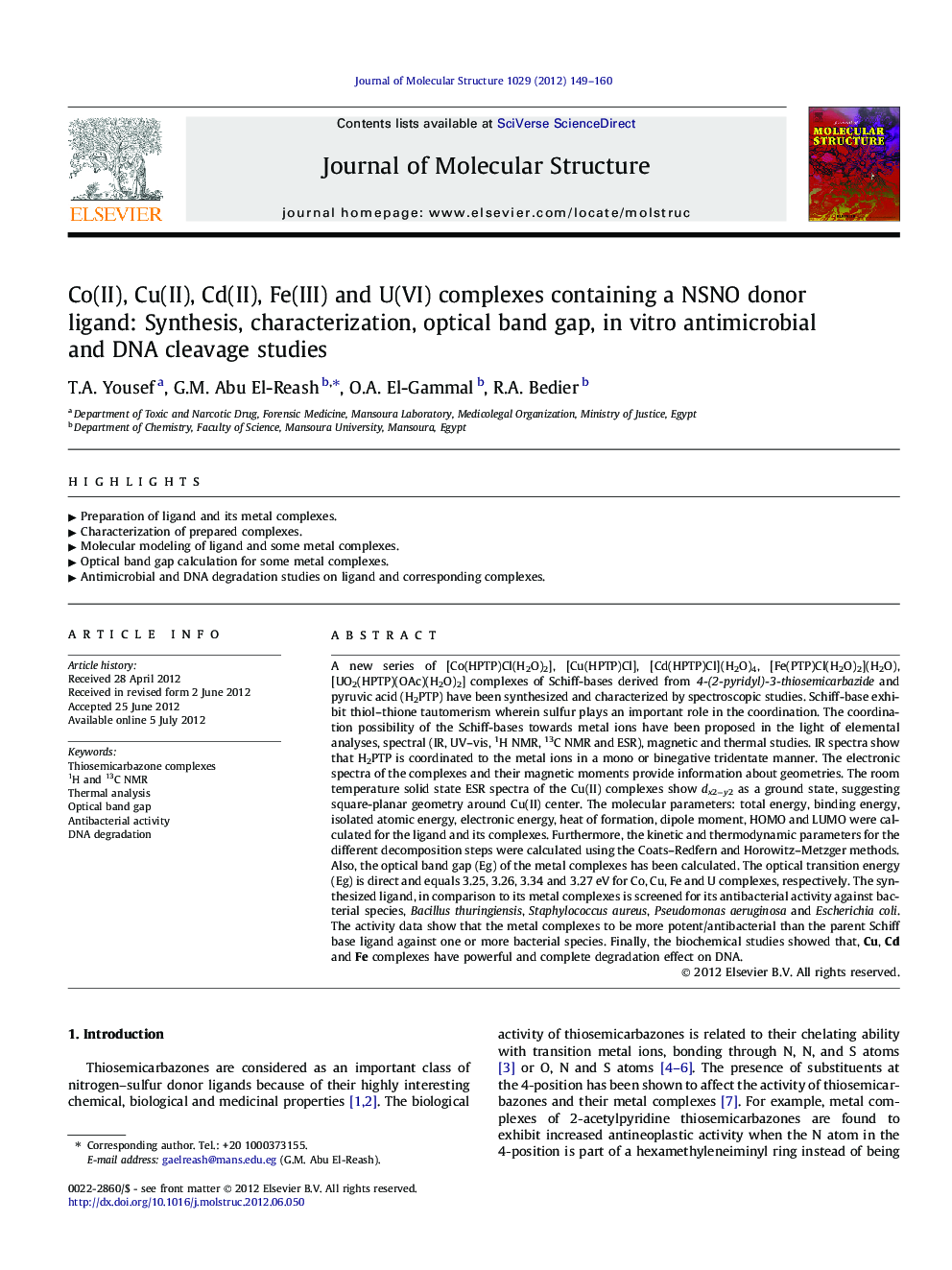| کد مقاله | کد نشریه | سال انتشار | مقاله انگلیسی | نسخه تمام متن |
|---|---|---|---|---|
| 1408966 | 1501785 | 2012 | 12 صفحه PDF | دانلود رایگان |

A new series of [Co(HPTP)Cl(H2O)2], [Cu(HPTP)Cl], [Cd(HPTP)Cl](H2O)4, [Fe(PTP)Cl(H2O)2](H2O), [UO2(HPTP)(OAc)(H2O)2] complexes of Schiff-bases derived from 4-(2-pyridyl)-3-thiosemicarbazide and pyruvic acid (H2PTP) have been synthesized and characterized by spectroscopic studies. Schiff-base exhibit thiol–thione tautomerism wherein sulfur plays an important role in the coordination. The coordination possibility of the Schiff-bases towards metal ions have been proposed in the light of elemental analyses, spectral (IR, UV–vis, 1H NMR, 13C NMR and ESR), magnetic and thermal studies. IR spectra show that H2PTP is coordinated to the metal ions in a mono or binegative tridentate manner. The electronic spectra of the complexes and their magnetic moments provide information about geometries. The room temperature solid state ESR spectra of the Cu(II) complexes show dx2−y2 as a ground state, suggesting square-planar geometry around Cu(II) center. The molecular parameters: total energy, binding energy, isolated atomic energy, electronic energy, heat of formation, dipole moment, HOMO and LUMO were calculated for the ligand and its complexes. Furthermore, the kinetic and thermodynamic parameters for the different decomposition steps were calculated using the Coats–Redfern and Horowitz–Metzger methods. Also, the optical band gap (Eg) of the metal complexes has been calculated. The optical transition energy (Eg) is direct and equals 3.25, 3.26, 3.34 and 3.27 eV for Co, Cu, Fe and U complexes, respectively. The synthesized ligand, in comparison to its metal complexes is screened for its antibacterial activity against bacterial species, Bacillus thuringiensis, Staphylococcus aureus, Pseudomonas aeruginosa and Escherichia coli. The activity data show that the metal complexes to be more potent/antibacterial than the parent Schiff base ligand against one or more bacterial species. Finally, the biochemical studies showed that, Cu, Cd and Fe complexes have powerful and complete degradation effect on DNA.
► Preparation of ligand and its metal complexes.
► Characterization of prepared complexes.
► Molecular modeling of ligand and some metal complexes.
► Optical band gap calculation for some metal complexes.
► Antimicrobial and DNA degradation studies on ligand and corresponding complexes.
Journal: Journal of Molecular Structure - Volume 1029, 12 December 2012, Pages 149–160